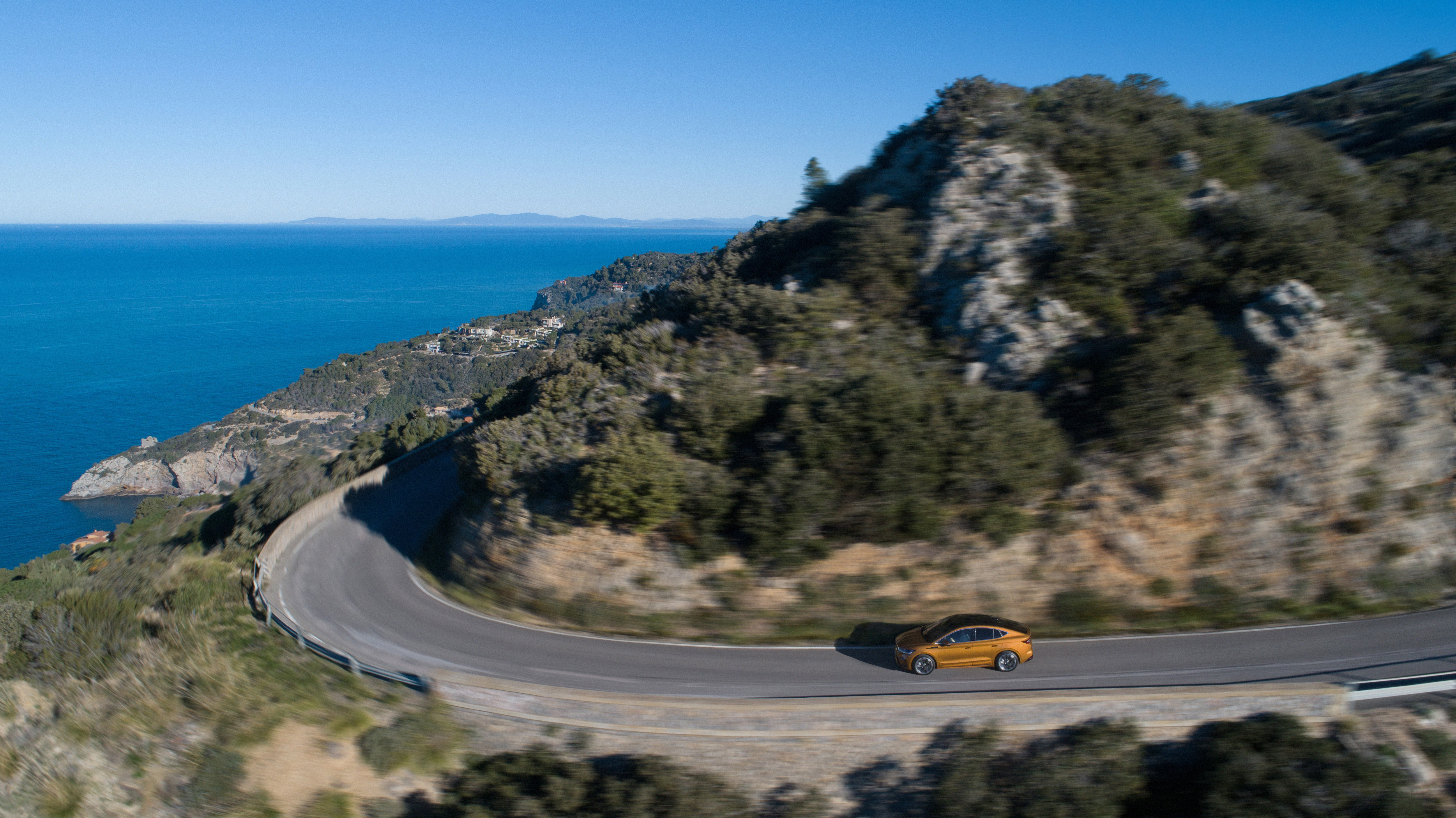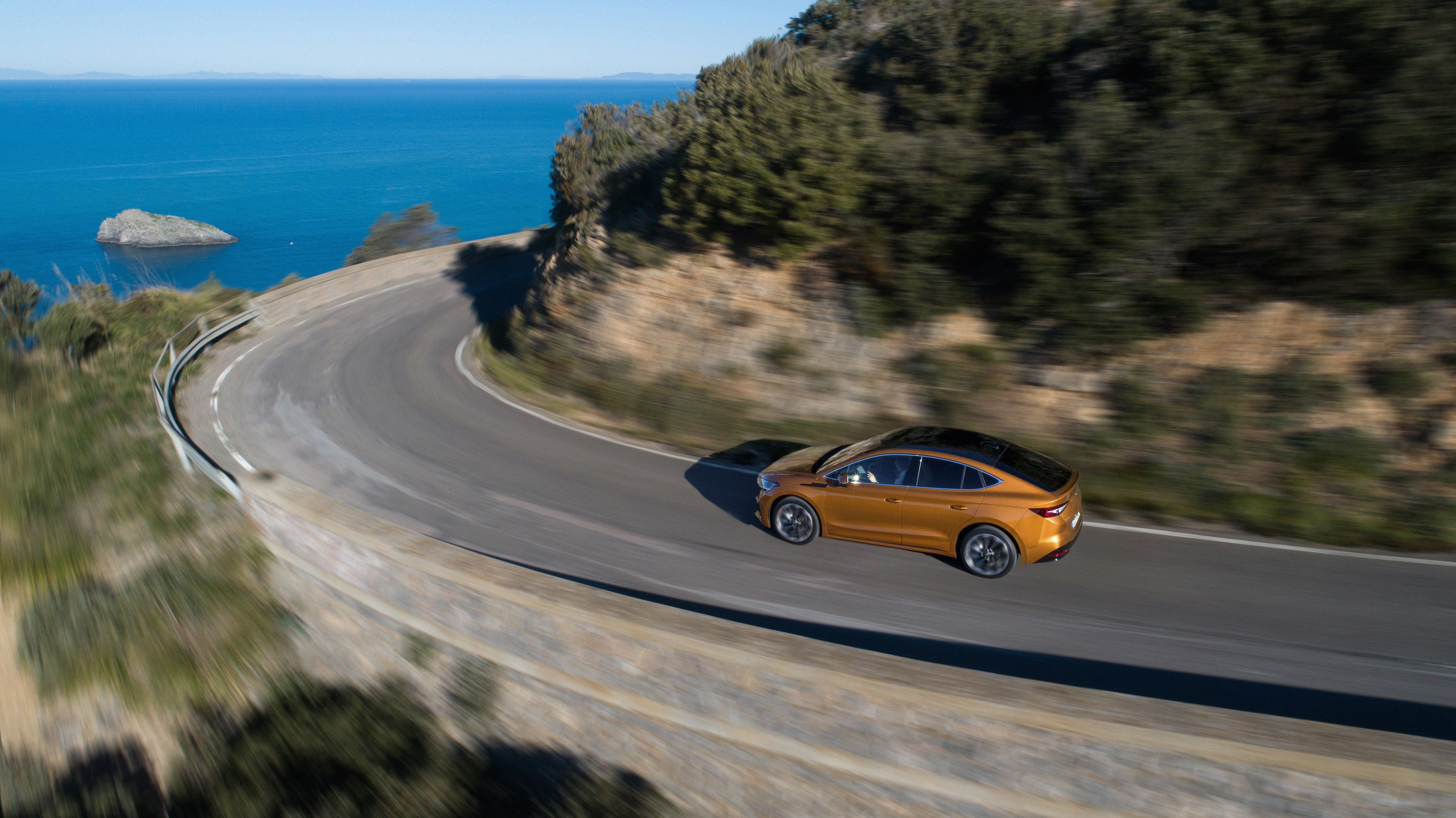› The ŠKODA RAPID SIX and ŠKODA POPULAR MONTE CARLO were the first coupés in the 1930s
› The ŠKODA 110 R and the successful ŠKODA 130 RS rally variant set milestones
› The ŠKODA GARDE and ŠKODA RAPID continued the tradition from 1981 to 1990
Mladá Boleslav, 7 March 2022 – Sporty coupé models have a long tradition at ŠKODA. The first representatives were the ŠKODA RAPID SIX and the ŠKODA POPULAR MONTE CARLO in the 1930s. A milestone in the history of the Czech car manufacturer was the ŠKODA 110 R from the 1970s. The rally car based on the 1970s model, the ŠKODA 130 RS, then became a motorsport legend as the ‘Porsche of the East’. The ŠKODA GARDE and ŠKODA RAPID followed between 1981 and 1990. Now the coupé tradition is being revived in Mladá Boleslav with the ŠKODA ENYAQ COUPÉ iV.
The history of the ŠKODA coupés began back in 1934 with a few ŠKODA RAPID SIX vehicles. The rear-wheel-drive rally car had a six-cylinder engine with an output of 37 kW (50 PS) and reached a top speed of 130 km/h. To mark the ŠKODA POPULAR’s second place in the category of cars with a capacity of up to 1,500 cc at the Monte Carlo Rally, ŠKODA launched the special-edition ŠKODA POPULAR MONTE CARLO producing 22 kW (30 PS) limited to 70 roadsters and coupés in 1936.
Successful 1970s: the ŠKODA 110 R and ŠKODA 130 RS
In the 1970s, ŠKODA produced an elegant two-door coupé – this was its first mass-production car. Demand for the ŠKODA 110 R, introduced in 1970, was so great that the majority of vehicles produced at the Kvasiny plant were exported to western markets. The model set itself apart from the ŠKODA 100/110 notchback saloon due to its laid-back windscreen, wide doors with frameless windows and sloping rear. This model featured a unibody design, a rear-mounted 1.1-litre engine with twin carburettors and separate oil cooler, and produced 38 kW (52 PS); its top speed was 145 km/h. The engine block and crankcase were manufactured according to a Czech patent using the aluminium die-casting process. By 1980, more than 57,000 units of the ŠKODA 110 R had been built, providing a perfect basis for the brand’s motorsport activities. Following the ŠKODA 180 RS and 200 RS rally prototypes, the ŠKODA 130 RS became a legend. In 1977, the ‘Porsche of the East’ finished first and second in its category at the famous Monte Carlo Rally and also won the Acropolis Rally. The circuit-racing variant had an output of 105 kW (142 PS) and took the overall win in the 1981 European Touring Car Championship.
The ŠKODA GARDE and ŠKODA RAPID followed the ŠKODA 110 R
The 110 R was succeeded by the ŠKODA GARDE in 1981. It was based on the 105/120 notchback series and featured a rear axle with semi-trailing arms, precise rack-and-pinion steering and front seats with integrated headrests. Producing 40.5 kW (55 PS), it reached a top speed of 150 km/h. Over a period of three years, more than 11,000 were built in Kvasiny and Bratislava. This model was followed by the ŠKODA RAPID in 1984, sporting a body designed by the renowned Italian Giorgio Giugiaro. The RAPID 130, 135 and 136 had an output of between 40.5 kW (55 PS) and 46 kW (63 PS), while the 135 and 136 variants were produced mainly for export. By 1990, more than 33,000 RAPIDs had been produced.

Christian Heubner
Head of Product Communications
T +420 730 862 420
christian.heubner@skoda-auto.cz
Štěpán Řehák
Spokesperson – Product Communications
T +420 734 298 614
stepan.rehak@skoda-auto.cz




























